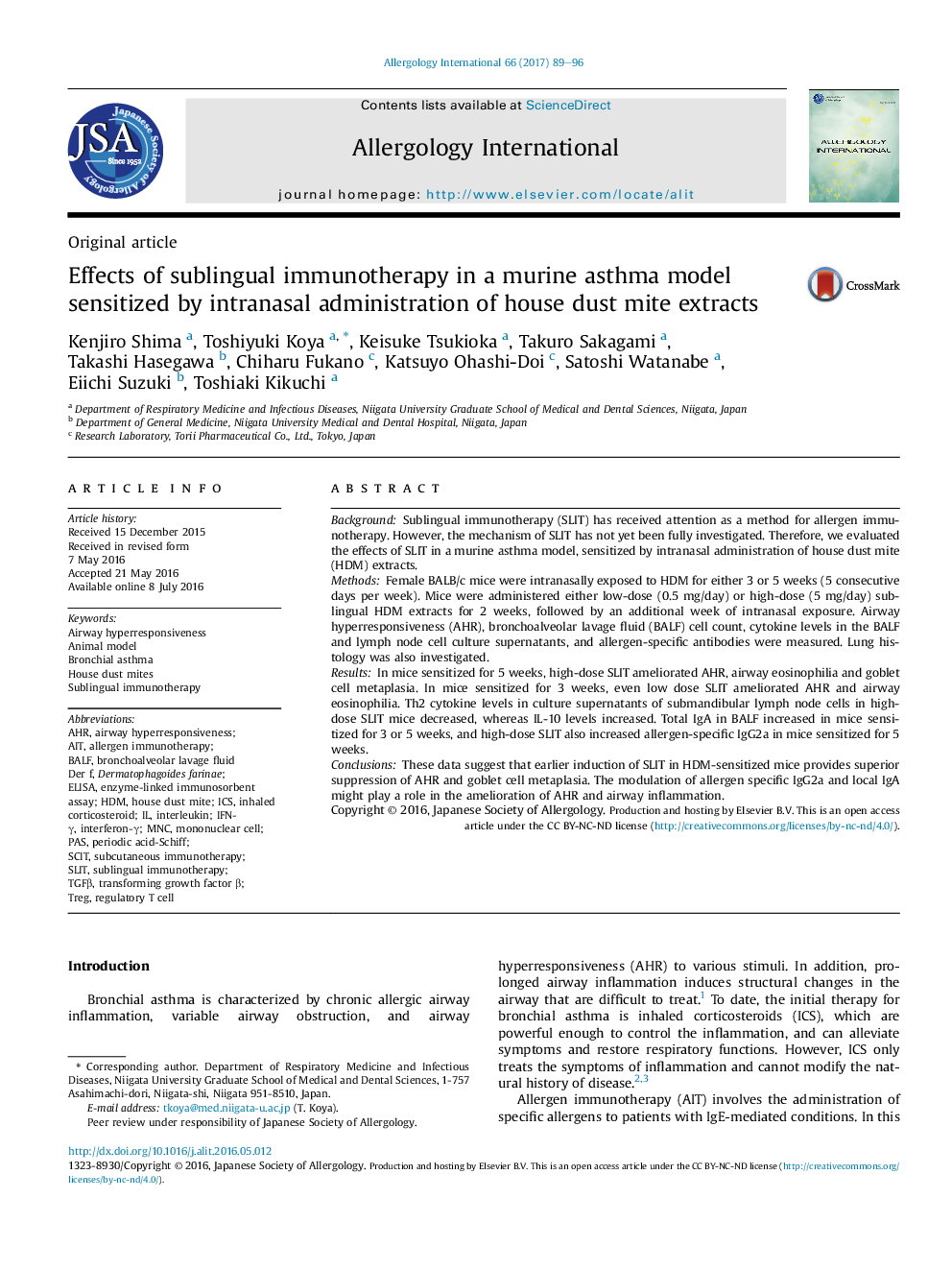| Article ID | Journal | Published Year | Pages | File Type |
|---|---|---|---|---|
| 5665232 | Allergology International | 2017 | 8 Pages |
BackgroundSublingual immunotherapy (SLIT) has received attention as a method for allergen immunotherapy. However, the mechanism of SLIT has not yet been fully investigated. Therefore, we evaluated the effects of SLIT in a murine asthma model, sensitized by intranasal administration of house dust mite (HDM) extracts.MethodsFemale BALB/c mice were intranasally exposed to HDM for either 3 or 5 weeks (5 consecutive days per week). Mice were administered either low-dose (0.5Â mg/day) or high-dose (5Â mg/day) sublingual HDM extracts for 2 weeks, followed by an additional week of intranasal exposure. Airway hyperresponsiveness (AHR), bronchoalveolar lavage fluid (BALF) cell count, cytokine levels in the BALF and lymph node cell culture supernatants, and allergen-specific antibodies were measured. Lung histology was also investigated.ResultsIn mice sensitized for 5 weeks, high-dose SLIT ameliorated AHR, airway eosinophilia and goblet cell metaplasia. In mice sensitized for 3 weeks, even low dose SLIT ameliorated AHR and airway eosinophilia. Th2 cytokine levels in culture supernatants of submandibular lymph node cells in high-dose SLIT mice decreased, whereas IL-10 levels increased. Total IgA in BALF increased in mice sensitized for 3 or 5 weeks, and high-dose SLIT also increased allergen-specific IgG2a in mice sensitized for 5 weeks.ConclusionsThese data suggest that earlier induction of SLIT in HDM-sensitized mice provides superior suppression of AHR and goblet cell metaplasia. The modulation of allergen specific IgG2a and local IgA might play a role in the amelioration of AHR and airway inflammation.
Graphical abstractDownload high-res image (138KB)Download full-size image
